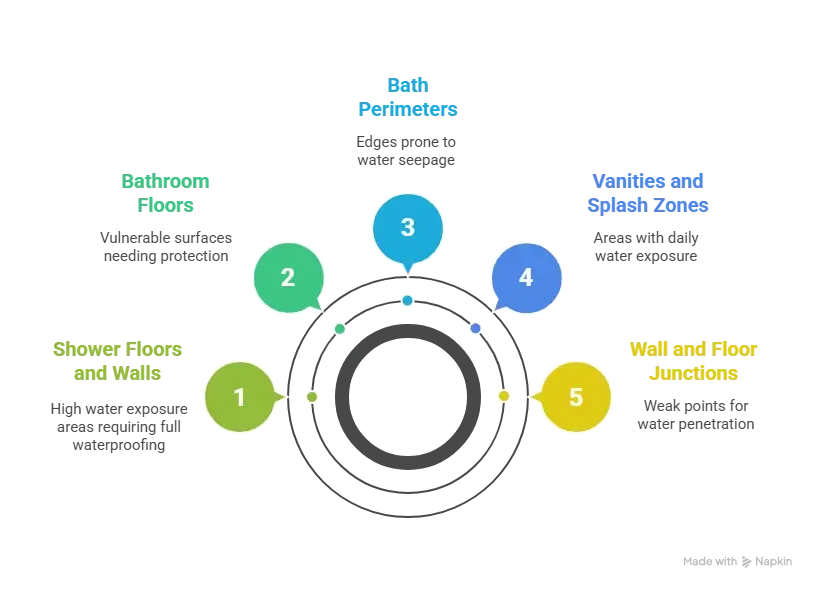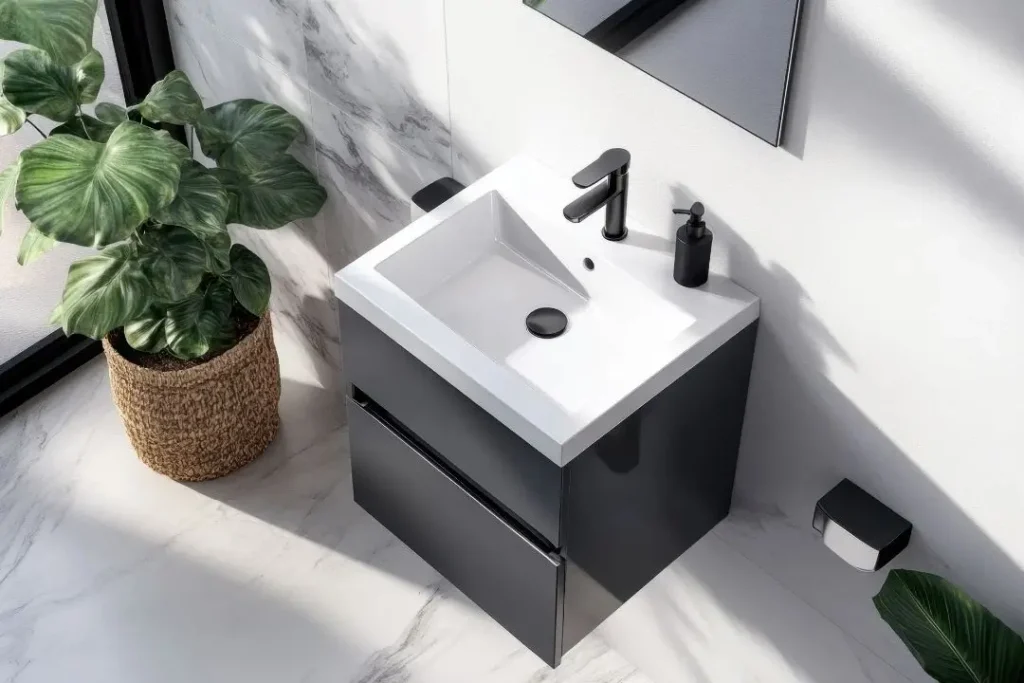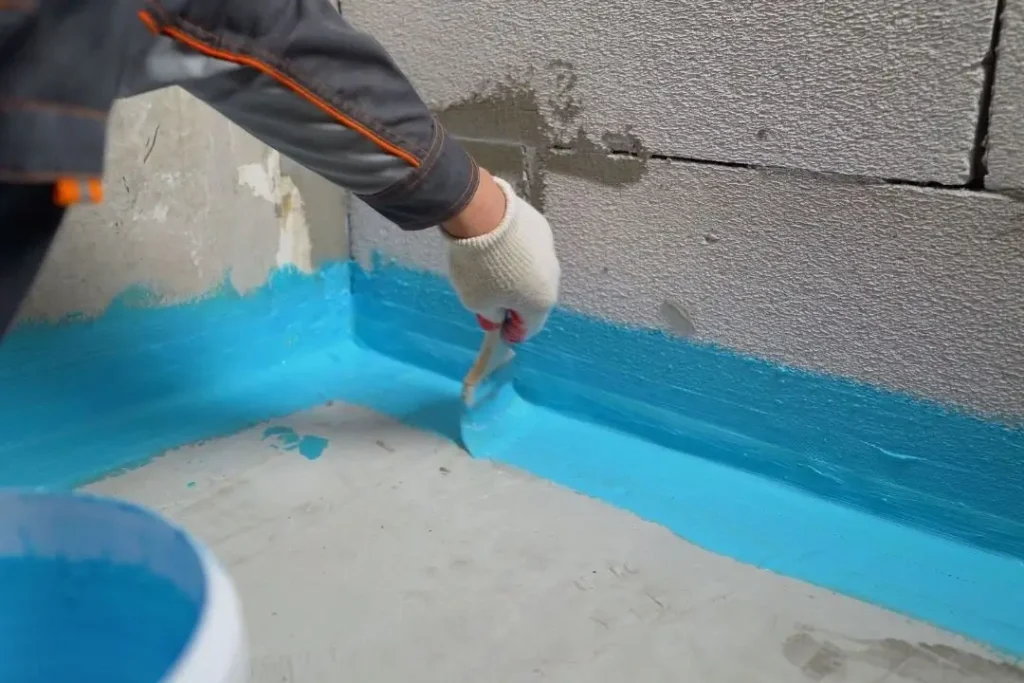Bathroom renovations aren’t just about choosing finishes. Without proper waterproofing, even a small leak can spread unnoticed into walls and floors, leading to structural damage, mould, and repairs that quickly add up. The Gold Coast’s warm climate and high humidity make it even more important to get this part of the renovation right, since moisture problems can develop faster here than in cooler, drier regions. That’s why every bathroom project needs to follow the national waterproofing standard for wet areas.
In this post, we’ll explain what the standard is, which areas it applies to, and why meeting it is essential for creating a bathroom that not only looks good but lasts.
What is AS 3740?
AS 3740 is the Australian Standard that sets the minimum requirements for waterproofing wet areas in residential buildings. It was created by the Standards Australia, the independent organisation that develops national guidelines to make sure building work across the country is safe and consistent. The standard outlines how bathrooms, laundries, and toilets must be sealed so water doesn’t escape into adjoining rooms or structural framing.
For homeowners, this means the standard is the rulebook that builders and licensed waterproofers must follow during a renovation. It ensures the bathroom is protected against leaks, moisture damage, and the kinds of hidden problems that often lead to costly repairs later on.
Areas That Require Waterproofing
AS 3740 identifies the key parts of a bathroom and other wet areas that must be sealed to prevent leaks and moisture damage. These zones are where water exposure is highest and the risk of long-term damage is greatest.

Shower Floors and Walls
Every shower base must be fully waterproofed to stop water from seeping into the floor structure. The walls also require treatment, with waterproofing applied to a height of at least 1800mm, and even more care taken if the shower has no hob. Without these protections, water can escape into the framing and cause mould or rot behind the tiles.
Bathroom Floors
Floors need waterproofing when they sit above ground level, are built from timber or particleboard, or where the shower is constructed without a hob. These types of surfaces are more vulnerable to movement and water damage, which makes them high-risk areas. Correctly applied waterproofing creates a barrier that safeguards both the bathroom itself and any rooms that may be below.
Bath Perimeters
The edges of a bathtub are common spots for water to seep into surrounding structures. AS 3740 requires these perimeters, as well as the adjoining walls, to be sealed thoroughly to prevent leaks. Proper treatment here avoids long-term damage to floors, wall cavities, and framing.
Vanities and Splash Zones
Basins and vanities are classed as splash zones that are exposed to water on a daily basis. Junctions around these fittings must be waterproofed to stop small, ongoing leaks that may not be noticeable right away. Sealing these areas helps protect cabinetry and wall linings from gradual moisture damage.

Wall and Floor Junctions
Corners where walls meet floors are highly susceptible to water penetration. The standard requires these junctions, along with any pipe penetrations, to be fully sealed with reinforced membranes. Addressing these weak points ensures water cannot travel unseen beneath tiles or into the building frame.
Houses vs Apartments
While waterproofing is essential in every home, apartments and multi-storey buildings often require extra attention. A leak in one unit can quickly spread into neighbouring properties or common areas, creating disputes and costly repairs. Meeting AS 3740 in these settings protects your home and those around you.
How Waterproofing is Tested
AS 3740 requires that waterproofing is checked before tiling or other finishes are installed. The most common method is a flood test, where the area is filled with water and left for 24 hours to make sure there are no leaks or seepage. This step is particularly important in high-rise apartments and multi-storey homes across the Gold Coast, where even a small leak can spread into neighbouring properties.
Testing and certification must be carried out by a licensed waterproofer or building certifier. In Queensland, contractors are licensed through the QBCC and provide documentation that the work meets AS 3740. Waterproofing compliance is also required as part of the building approval process, and certifiers will confirm it has been applied correctly before giving final sign-off on the renovation.
Why It’s Important for Homeowners

Waterproofing to AS 3740 isn’t just about meeting a technical standard. It directly affects the safety, durability, and long-term value of your home, especially in a climate like the Gold Coast where humidity and water exposure are constant. Below are some of the benefits of waterproofing your bathroom:
- Prevents structural damage by stopping leaks that can rot timber framing, damage particleboard floors, or travel into lower levels of multi-storey homes.
- Protects against mould by keeping hidden spaces dry in a region where damp conditions already make bathrooms prone to fungal growth.
- Ensures compliance with building codes so your renovation meets Queensland requirements, avoids council or body corporate issues, and keeps warranties valid.
- Safeguards property value by showing buyers and inspectors that the bathroom was built to a recognised national standard, reducing the risk of disputes during a sale.
Following AS 3740 helps protect homes across the Gold Coast from problems that thrive in warm, humid conditions. With the right waterproofing in place, your bathroom renovation is less likely to face hidden leaks, mould, or costly repairs in the years ahead.
Renovating with Waterproofing Done Right
AS 3740 sets the standard for keeping bathrooms protected against leaks and moisture damage. Understanding the basics helps homeowners see why it matters, while licensed waterproofers and renovators take care of meeting the requirements. Following the standard is especially important in the Gold Coast’s humid climate, where bathrooms are exposed to moisture every day and the risk of mould or hidden damage is higher.
If you’re planning a bathroom renovation, our team can manage the waterproofing in line with AS 3740 as part of a complete service which also includes bathroom design, formal building documentation and certification and complete demolition and strip out of the existing bathroom and every aspect of building and installing your new custom designed bathroom. Contact us today to discuss your project during a free onsite quote.

